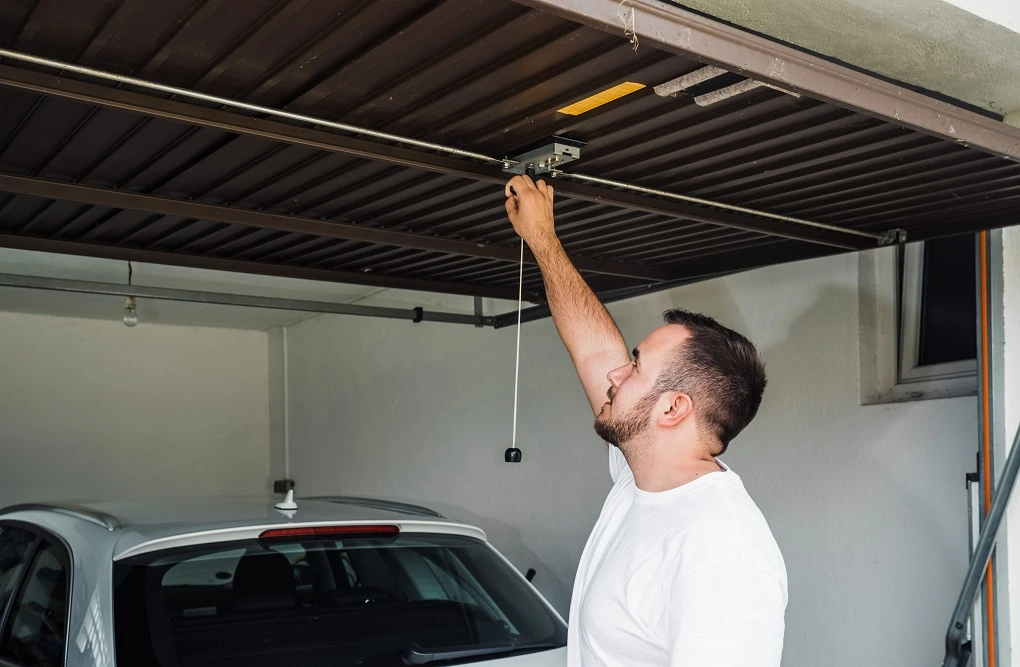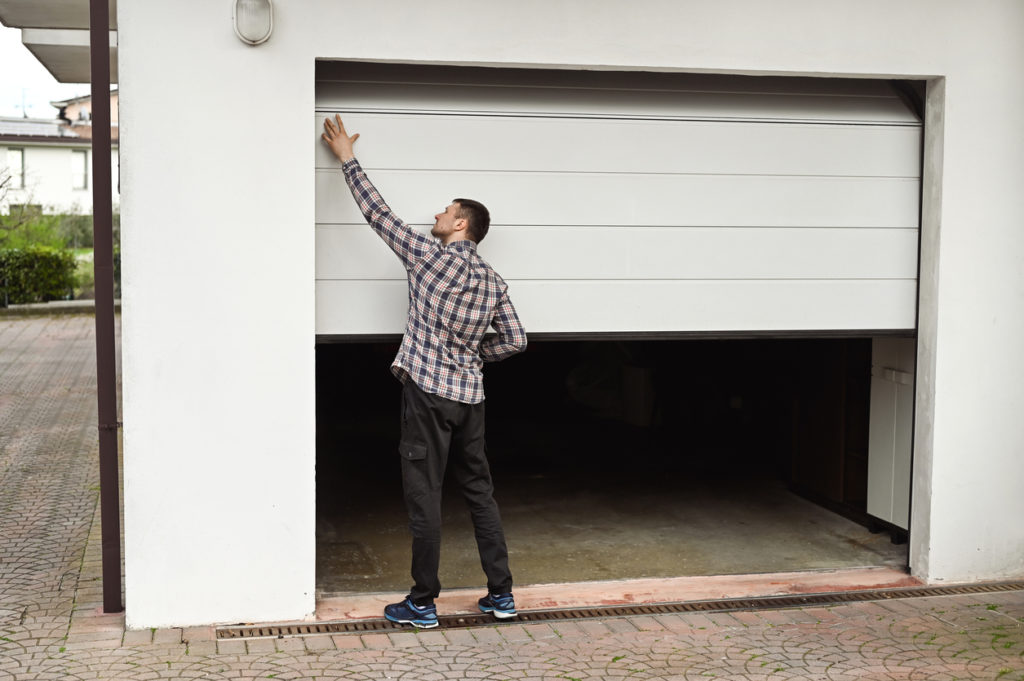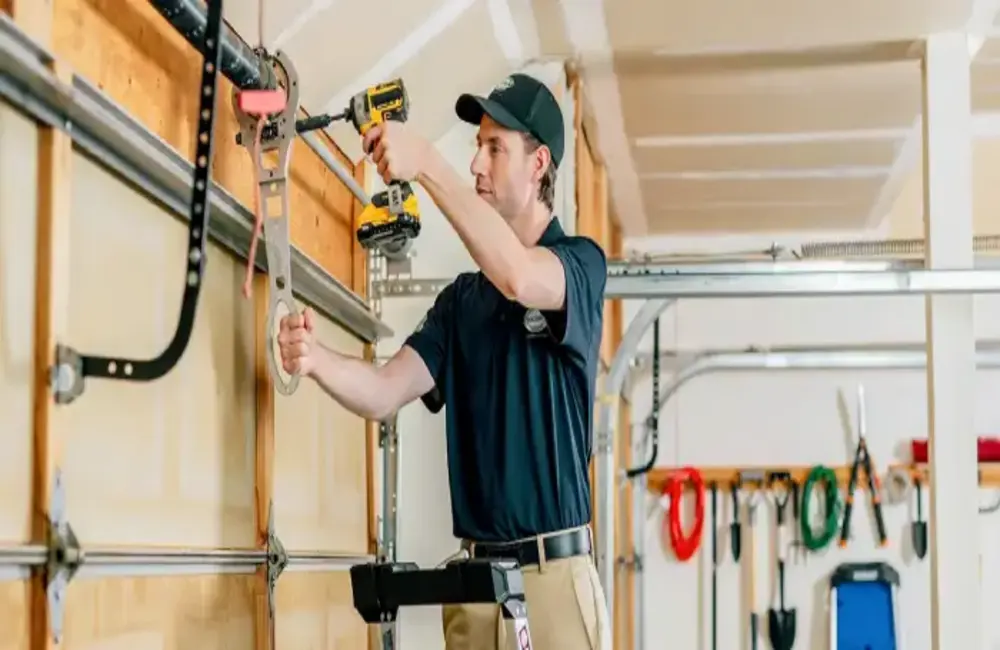When the power goes out or your garage door opener malfunctions, knowing how to manually open your garage door can be a lifesaver.
However, it’s important to do it properly to avoid damaging the door or opener.
In this article, we’ll explain how to manually open your garage door, the benefits of knowing this process, and the steps to ensure smooth operation. Understanding this can also be a key part of garage door maintenance in Elk Grove Village IL, especially during power outages or mechanical failures when quick access is essential.
Can you manually open a garage door?
Yes, you can manually open a garage door by pulling the emergency release cord to disconnect the opener, then lifting the door by hand. Make sure it moves easily and isn’t too heavy.
Key Takeaways
- You can manually open most garage doors, even without power, by using the manual release system.
- It’s important to know how to open the garage door manually in case of power outages or opener malfunctions.
- Regular maintenance of the manual release system and the garage door opener ensures smooth operation when needed.
Why You Might Need to Open Your Garage Door Manually

While electric garage door openers are convenient, they’re dependent on power and can fail due to various reasons.
When the power goes out or your garage door opener malfunctions, being able to manually open your garage door can be a lifesaver.
However, it’s important to know how to properly open your garage door manually to avoid causing damage to the door or the opener.
We’ll explain how you can manually open your garage door, the benefits of knowing this process, and the steps you should take to ensure smooth operation.
Power outages, mechanical failures, or malfunctions can leave you unable to use the opener. In such situations, it’s useful to know how to open the door manually, so you’re not left stranded.
Here are some common reasons why you may need to open your garage door manually:
Power Outages
Power cuts can disable your garage door opener, but you can still open the door manually using the manual release feature.
This is essential if you need to leave the house or bring your car inside.
Garage Door Opener Failure
If your garage door opener stops working due to a mechanical issue, knowing how to disengage the opener and open the door manually allows you to bypass the issue temporarily until it can be fixed. However, with modern solutions like the ability to remote control garage door via phone, you can often diagnose or even operate your door without being physically present—adding convenience and peace of mind.
Maintenance and Repairs
Sometimes, maintenance or repairs require the door to be opened manually. Whether you’re fixing the opener, adjusting the tracks, or replacing a broken spring, you may need to disengage the automatic mechanism to move the door manually. For reliable garage door service in Somonauk, Illinois, professionals are equipped to handle these situations, ensuring that your garage door operates smoothly and safely after any necessary adjustments or repairs.
How to Manually Open a Garage Door

Most garage doors come with a manual release system, which allows you to open the door without power.
This system disconnects the door from the opener’s mechanism, allowing you to lift it by hand. Follow these steps to open your garage door manually:
Locate the Manual Release Cord
The manual release cord is usually a red rope or handle hanging from the garage door opener track.
This cord is used to disconnect the door from the opener. It’s typically located near the centre of the door or in the middle of the trolley.
Pull the Manual Release Cord
Gently pull the red manual release cord. This will disengage the garage door from the opener’s motor, allowing it to be operated manually.
You may need to pull the cord down or towards the opener to fully disengage the door.
Lift the Garage Door
Once the door is disconnected from the opener, you can begin lifting it manually. Depending on the size and weight of your garage door, this may be relatively easy or more challenging.
Most garage doors are designed with springs to help balance the weight, but be cautious if the door feels unusually heavy or difficult to lift.
Secure the Door in the Open Position
If you need to keep the door open for an extended period, make sure it’s securely propped up.
Some garage doors may stay in place once lifted, but others may need support to prevent them from falling.
Reconnect the Garage Door Opener When Power is Restored
After the power is restored or the opener is repaired, you can reconnect the door to the opener. To do this, pull the manual release cord back towards the motor to engage the door with the opener. Once the door is reconnected, you can operate it using the remote or wall switch again. If you’re experiencing difficulties or need professional assistance, garage door repair in Sandwich, IL can ensure that everything is working smoothly and safely.
Troubleshooting Issues When Trying to Open Your Garage Door Manually
While manually opening your garage door is generally a straightforward process, you may run into a few issues. Here are some common problems and solutions:
Stiff or Stuck Door
If your garage door is hard to lift manually, it may be due to misaligned tracks, worn-out rollers, or a broken spring. These issues can cause friction that makes the door difficult to move.
Solution: Check the tracks for debris or obstructions. Inspect the rollers for wear and tear.
If you notice broken springs, contact a professional to have them replaced, as broken springs can be dangerous to repair yourself.
Manual Release Cord Won’t Disconnect
If the manual release cord isn’t disengaging the door, the mechanism might be stuck or malfunctioning.
Solution: Gently tug on the cord to see if it disengages the door.
If the cord is jammed or doesn’t release, it’s best to contact a garage door professional to inspect the release mechanism.
Garage Door Won’t Stay Open
If the door won’t stay open once you lift it, it could be due to issues with the springs, tracks, or cables.
Solution: If the door doesn’t stay open, it could indicate that the springs are out of balance or damaged.
This issue is best addressed by a professional, as garage door springs are under high tension.
When to Call a Professional
While knowing how to manually open your garage door is essential, certain situations may require professional assistance.
If you encounter any of the following problems, it’s a good idea to call in a professional: The manual release cord won’t disconnect the door.The door is too heavy to lift manually.
There are issues with the springs, cables, or other mechanisms. The door is off-track and won’t close properly.
A garage door technician will be able to quickly diagnose and resolve these issues, ensuring that your door works smoothly and safely.
Preventative Measures for Avoiding Future Issues

To ensure that your garage door operates smoothly in the future, here are some preventative steps to take:
Regular Maintenance
Regularly inspect the door’s components, including the springs, rollers, and tracks. Lubricate moving parts every six months to prevent wear and tear.
Test the Manual Release Cord
Make sure the manual release cord is functioning properly by testing it occasionally. This ensures that if you need to use it in an emergency, it will work as expected.
Monitor the Garage Door Opener
Pay attention to the garage door opener’s performance. If you notice it struggling to open and close your garage door, it might be time to have the system serviced before it fails completely.
Frequently Asked Questions
1. How do I know if my garage door opener is malfunctioning?
If your garage door opener is not working or struggling to lift the door, it may be time to check the power supply, the remote batteries, or the system’s components for any issues.
2. Can I open my garage door manually if the springs are broken?
If the springs are broken, the door will likely be very difficult to lift manually. In this case, it’s best to call a professional to handle the spring replacement and ensure safe operation.
3. Is it safe to manually open my garage door?
Yes, it is safe to manually open your garage door if you follow the correct steps. However, be cautious when lifting the door, especially if it is heavy or you notice any issues with the tracks or springs.
Conclusion
Manually opening your garage door is a valuable skill to have, especially in situations where the power goes out or the opener fails.
Understanding how to disengage the motor and lift the door can help you regain access to your garage without hassle.
However, if you experience any difficulties or mechanical failures, it’s important to consult a professional to avoid further damage.
Regular maintenance can also help ensure that your garage door operates smoothly and that you’re always prepared in case of an emergency.

